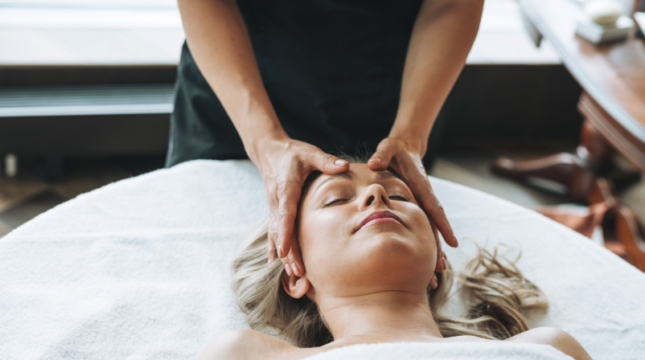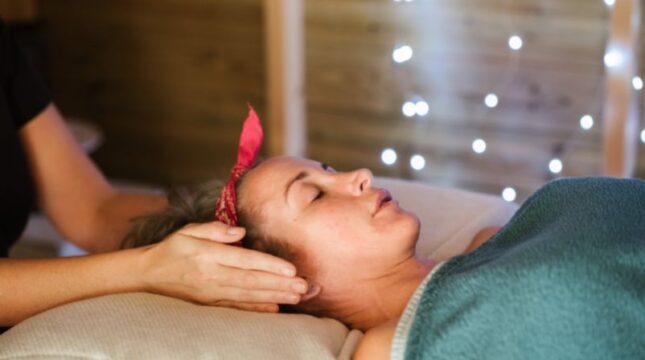What can I do without a massage license?
There’s no straightforward answer to this question because massage therapy laws and licensing requirements vary by state — sometimes even by county. Most states have a massage therapy board to set educational and testing requirements and issue licenses.
In Indiana, for example, licensed massage therapists are regulated by the State Board of Massage Therapy under the Indiana Professional Licensing Agency. Certified massage therapists must meet state training and examination requirements, have professional liability insurance policies, and submit fingerprints for a background check.
By contrast, in California, certification is voluntary. If you don’t have a massage therapy license or certification in California and the city or town where you practice doesn’t impose additional requirements, there isn’t a penalty for practicing massage without a license in California.
However, before setting up a practice, check with local authorities to learn local regulations, as some services might require other certifications or training. Here are some ideas:
- Breathwork coaching
- Stretching coaching
- Meditation guidance
- Reiki (energy healing)
- Reflexology (sometimes considered outside the scope of massage therapy)
- Aromatherapy
What’s the penalty for practicing massage without a license?
Depending on the state, the penalties for practicing massage without a license may vary.
For example, in Florida, an unlicensed massage therapist could be sentenced to up to one year in jail. In Oklahoma, even advertising services using the word “massage” without a valid massage license is a misdemeanor. In New York, practicing massage without a license is currently a felony.
In states where licenses are required, you could face the following consequences of operating without a license:
- Fines. Fines can range anywhere from a few hundred to several thousand dollars.
- Restitution. You may be ordered to repay fees collected from clients.
- Criminal charges. Offering massage services without a license is considered a misdemeanor or even a felony, which can result in fines and possible jail time.
- Lawsuits. You could face lawsuits from clients claiming harm from your services.
- Loss of reputation. Your professional reputation could be tarnished, making building trust with future clients difficult.
- Closure of business. You could be forced to shut down your business until you comply with the law.
- Difficulty obtaining a license. Operating without a license could make it harder to get a license in the future. Many states consider prior violations during the application process.
Massage therapist insurance requirements
Massage therapists usually carry massage therapist insurance to protect their business from malpractice lawsuits. Massage therapist insurance is widely available, but it’s important to understand local regulations as well as the needs of the business before purchasing a policy.
Small business insurance, including general liability insurance and professional liability insurance, is an important part of running a small business. Students may also want to carry general liability insurance for school-sponsored and career-related education.
Massage professionals practicing hot stone massage, yoga instruction or estheticians may also have special insurance needs.
Massage therapist license education and exam requirements
Licensure requirements differ from state to state but typically include 500 to 650 hours of massage training.
Passing the Massage & Bodywork Licensing Exam (MBLEx) is another typical requirement. Here are the components of this standard test:
- 12%: Anatomy and Physiology
- 11%: Kinesiology
- 13%: Pathology, Contraindications, Areas of Caution, Special Populations
- 14%: Benefits and Physiological Effects of Technique that Manipulate Soft Tissue
- 17%: Client Assessment, Reassessment, and Treatment Planning
- 5%: Overview of Massage and bodywork Modalities/Culture/History
- 15%: Ethics, Boundaries, Laws, Regulations
- 13%: Guidelines for Professional Practice
The Federation of State Massage Therapy Boards administers and oversees the test nationwide. Every five to seven years, the test is revised and updated to reflect current practices and knowledge within the industry.
Before a massage therapist can take the test, they must prove they’ve completed massage education and training in all areas of the MBLEx outline or graduated from an approved massage therapy program.
Legal requirements for massage therapists
States are allowed to set their own rules about licensing requirements for massage therapists and massage therapy businesses.
The American Massage Therapy Association (AMTA) offers a state-by-state guide to licensing requirements with links to current legislation for each state.





